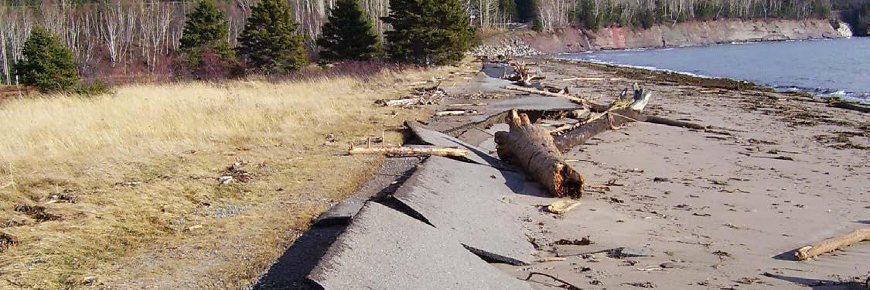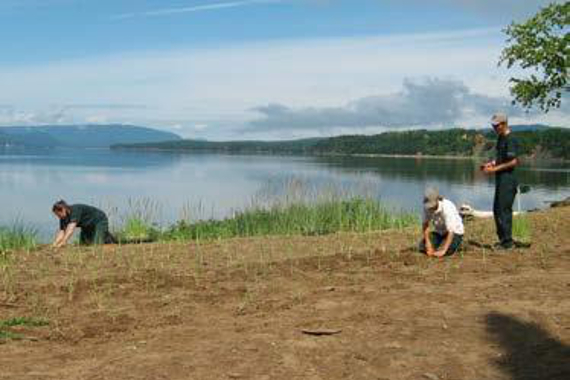
A damaged access road along the Penouille Peninsula before it was removed as part of an effort to restore coastal ecosystems.
Adapting to climate change
Restoring coastal dynamics in Forillon National Park
What’s the issue?

Climate change is causing sea levels to rise in the Gulf of Saint Lawrence. By 2050, part of the shoreline on the Penouille Peninsula in Forillon National Park is predicted to be periodically under water. With beaches submerged, species and ecosystems will respond; new beaches will form, and beach grasses will shift locations. More intense storms and less protective ice in winter – two other consequences of climate change – are already having negative effects on park roads, trails and buildings built close to the coast. With trails deteriorating, visitors will have no choice but to walk through sensitive areas, trampling plants such as the rare sand heather. Staff at Forillon are restoring the coast to help the park adapt to change.
What’s our approach?
- Reduce infrastructure by decommissioning the deteriorated access road to Penouille Peninsula; re-establish native beach grasses in its place.
- Relocate or redesign buildings and trails so they are more resilient to changing water levels and storm surge.
- Engage stakeholders, visitors and Canadians about coastal erosion, adaptive management initiatives and how they can help protect this sensitive area.
What’s been accomplished?
- Removed the access road to Penouille Peninsula; planted 450 square meters of native plants to help stabilize the sand.
- Removed one building, and redesigned and constructed another on stilts so it can withstand fluctuating water levels, be submersed for a short time or easily moved.
- Created new trails to achieve a 76 percent reduction of trampling of sensitive plant species in target coastal areas.
- Communicated broadly with the public online, through videos and social media, and via traditional media; garnered widespread support and understanding of restoration initiatives.
- Date modified :